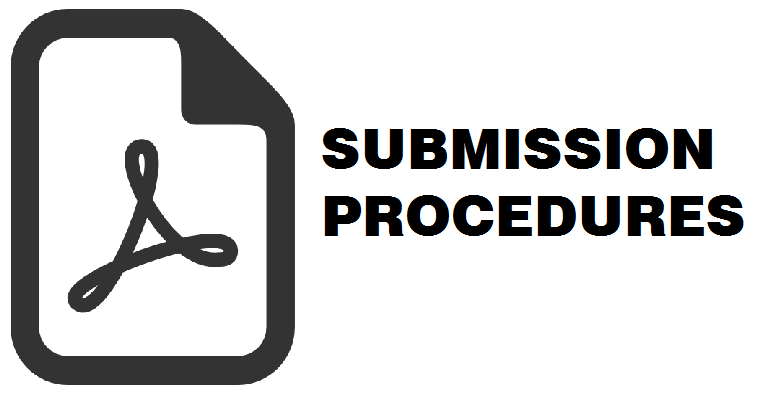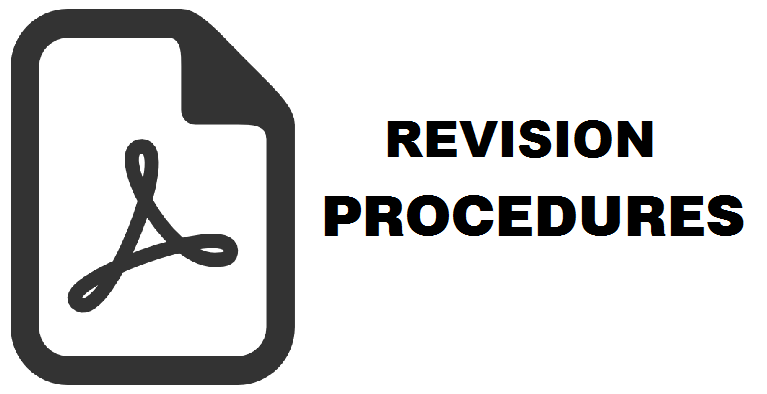Geochemical Weathering of Volcanic Materials at Southern Catena of Mount Merapi
Lis Noer Aini(1*), Eko Hanudin(2)
(1) Faculty of Agriculture, Universitas Muhammadiyah Yogyakarta, Yogyakarta, Indonesia
(2) Faculty of Agriculture, Universitas Gadjah Mada, Yogyakarta, Indonesia
(*) Corresponding Author
Abstract
Soil fertility is enhanced by eruptions of Mount Merapi, which deposits pyroclastic debris rich in weatherable primary minerals. Therefore, this study aimed to assess the geochemical weathering index of soils in the southern catena of Mount Merapi, an area affected by the 2010 eruption. Soil samples were collected to describe 4 geomorphic units, namely the higher, middle, lower, and foot slopes. X-ray fluorescence (X-RF) was conducted to determine total element content, and five weathering indexes (Weathering Index of Parker (WIP), Vogt's Residual Index (V), Chemical Index of Alteration (CIA), Chemical Index of Weathering (CIW), and Plagioclase Index of Alteration (PIA)) were calculated. The results show that aluminum (Al) was the most abundant oxide, followed by calcium (Ca), potassium (K), magnesium (Mg), and sodium (Na). Weathering indexes suggested moderate weathering (WIP > 100, V > 1) with a significant presence of fresh volcanic material (CIA, CIW, PIA between 50-100, closer to 50). Variations in each horizon signified the vertical and horizontal movement of mobile elements. The C horizon (deeper layer) had a higher WIP but lower values for the other indexes. In conclusion, geomorphological units influenced the distribution of fresh volcanic material, weathering products, and translocation of elements. Weathering index values reflected the ongoing release of nutrients from minerals. This information was crucial for developing nutrient management strategies in the Merapi region.
Received: 2024-04-26 Revised: 2024-06-21 Accepted: 2025-02-19 Published: 2025-02-25
Keywords
References
Andreastuti, S, D., Newhall, C., and Dwiyanto, J (2006). Menelusuri Kebenaran Letusan Gunung Merapi 1006. Jurnal Geologi Indonesia. Vol. 1, No 4, pp. 201-207.
Aini, L. N., Soenarminto, B. H., Hanudin, E., & Sartohadi, J. (2019). Plant nutritional potency of recent volcanic materials from the southern flank of mt. Merapi, Indonesia. Bulgarian Journal of Agricultural Science, 25(3), 527–533.
Aini, L. N., Sunarminto, B. H., Hanudin, E., & Sartohadi, J. (2018). Soil morphogenesis diversity at the southern flank of Merapi Volcano, Indonesia five years post-eruption. Indian Journal of Agricultural Research, 52(of), 472–480. https://doi.org/10.18805/IJARe.A-325
Anda, M., & Sarwani, M. (2012). Mineralogy, Chemical Composition, and Dissolution of Fresh Ash Eruption: New Potential Source of Nutrients Article. Soil Science Society of America Journal, 76(January), 733–747. https://doi.org/10.2136/sssaj
Buggle, B., Glaser, B., Hambach, U., Gerasimenko, N., & Marković, S. (2011). An evaluation of geochemical weathering indices in loess–paleosol studies. Quaternary International, 240(1–2), 12–21. https://doi.org/10.1016/j.quaint.2010.07.019
Eko Hanudin. (2011). Pendekatan Agrogeologi Dalam Pemulihan Lahan Pertanian Pasca Erupsi Merapi (Agrogeology Approach in Recovering Agricultural Land after Merapi Volcano Eruption) Volcano Eruption). Prosiding Seminar Nasional HITI “Upaya Pemulihan Lahan Akibat Erupsi Gunungapi,” 1–15.
Fedo, C. M., Wayne Nesbitt, H., & Young, G. M. (1995). Unraveling the effects of potassium metasomatism in sedimentary rocks and paleosols, with implications for paleoweathering conditions and provenance. Geology, 23(10), 921. https://doi.org/10.1130/0091-7613(1995)023<0921:UTEOPM>2.3.CO;2
Fiantis, D., Nelson, M., Shamshuddin, J., Goh, T. B., & Van Ranst, E. (2010). Determination of the Geochemical Weathering Indices and Trace Elements Content of New Volcanic Ash Deposits from Mt. Talang (West Sumatra) Indonesia. Eurasian Soil Science, 43(13), 1477–1485. https://doi.org/10.1134/S1064229310130077
Fiantis, D., Nelson, M., Van Ranst, E., Shamshuddin, J., & Qafoku, N. P. (2009). Chemical weathering of new pyroclastic deposits from Mt. Merapi (Java), Indonesia. Journal of Mountain Science, 6(3), 240–254. https://doi.org/10.1007/s11629-009-1041-3
Harnois, L., & Moore, J. M. (1988). Geochemistry and origin of the Ore Chimney Formation, a transported paleoregolith in the Grenville Province of southeastern Ontario, Canada. Chemical Geology, 69(3–4), 267–289. https://doi.org/10.1016/0009-2541(88)90039-3
Kusumastuti, E. (2012). Pemanfaatan abu vulkanik gunung merapi sebagai geopolimer (suatu polimer anorganik aluminosilikat). Jurnal MIPA Unnes, 35(1), 66–76.
Massimo Nespolo. (2021). Encyclopedia of Geology (Second Edition). Pyroxenes. Academic Press, 5, 428–441. https://doi.org/https://doi.org/10.1016/8978-0-12-4095498-9.124091
Mello, D. C. de, Ferreira, T. O., Veloso, G. V., Lana, M. G. de, Mello, F. A. de O., Di Raimo, L. A. D. L., Cabrero, D. R. O., Souza, J. J. L. L. de, Fernandes-Filho, E. I., & Francelino, M. R. (2022). Weathering intensities in tropical soils evaluated by machine learning, clusterization and geophysical sensors. SOIL Discussions, June, 1–41. https://doi.org/https://doi.org/10.5194/soil-2022-17
Perri, F. (2020). Chemical weathering of crystalline rocks in contrasting climatic conditions using geochemical proxies: An overview. Palaeogeography, Palaeoclimatology, Palaeoecology, 556(October), 109873. https://doi.org/10.1016/j.palaeo.2020.109873
Price, J. R., & Velbel, M. A. (2003). Chemical weathering indices applied to weathering profiles developed on heterogeneous felsic metamorphic parent rocks. Chemical Geology, 202(3–4), 397–416. https://doi.org/10.1016/j.chemgeo.2002.11.001
Pusat Vulkanologi dan Mitigasi Bencana Geologi. (2011). Laporan dan Kajian Vulkanisme Erupsi: Edisi Khusus Erupsi Merapi 2006. In Acta Universitatis Agriculturae et Silviculturae Mendelianae Brunensis. https://katalog.kemdikbud.go.id/index.php?p=show_detail&id=95220&keywords=
Roaldset, E. (1972). Mineralogy And Geochemistry of Quaternary Clays In The Numedal Area, Southern Norway. Norsk Geologisk Tidsskrift, 52, 335–369. https://foreninger.uio.no/ngf/ngt/pdfs/NGT_52_4_335-369.pdf
Santosa, L. W., & Sutikno. (2006). Geomorphological Approach for Regional Zoning In The Merapi Volcanic Area. Indonesian Journal of Geography, 38(1), 53–68.
Sirbu-Radasanu, D. S., Huzum, R., Dumitraş, D.-G., & Stan, C. O. (2022). Mineralogical and Geochemical Implications of Weathering Processes Responsible for Soil Generation in Mănăila Alpine Area (Tulgheş 3 Unit—Eastern Carpathians). Minerals, 12(9), 1161. https://doi.org/10.3390/min12091161
Sudaryo, S. (2009). Identifikasi Dan Penentuan Logam Pada Tanah Vulkanik Di Daerah Cangkringan Kabupaten Sleman Dengan Metode Analisis Aktivasi Neutron Cepat. Seminar Nasional V Sdm Teknologi Nuklir Yogyakarta, 715–718.
Suhendro, I., & Haryono, E. (2023). Typology of Indonesian Stratovolcanoes: Insights from Geomorphological and Geological Aspects. Indonesian Journal of Geography, 55(2), 275–288. https://doi.org/10.22146/ijg.74692
Sutikno, Widiyanto, Santosa, L. W., Kurniawan, A., & HeryPurwanto, T. (2020). Distribution of natural resources and population density in the merapi volcano area. Indonesian Journal of Geography 35(2), 55–66. https://doi.org/10.22146/IJG.57270
Waroszewski, J., Egli, M., Brandová, D., Christl, M., Kabala, C., Malkiewicz, M., Kierczak, J., Glina, B., & Jezierski, P. (2018). Identifying slope processes over time and their imprint in soils of medium‐high mountains of Central Europe (the Karkonosze Mountains, Poland). Earth Surface Processes and Landforms, 43(6), 1195–1212. https://doi.org/10.1002/esp.4305
Weindorf, D.C.; Chakraborty, S. (2020). Portable X-ray fluorescence spectrometry analysis of soils. Soil Sci. Soc. Am. J. 84: 1384–1392.
Article Metrics
Refbacks
- There are currently no refbacks.
Copyright (c) 2025 Authors and Indonesian Journal of Geography

This work is licensed under a Creative Commons Attribution-NonCommercial 4.0 International License.
Accredited Journal, Based on Decree of the Minister of Research, Technology and Higher Education, Republic of Indonesia Number 225/E/KPT/2022, Vol 54 No 1 the Year 2022 - Vol 58 No 2 the Year 2026 (accreditation certificate download)
ISSN 2354-9114 (online), ISSN 0024-9521 (print)









